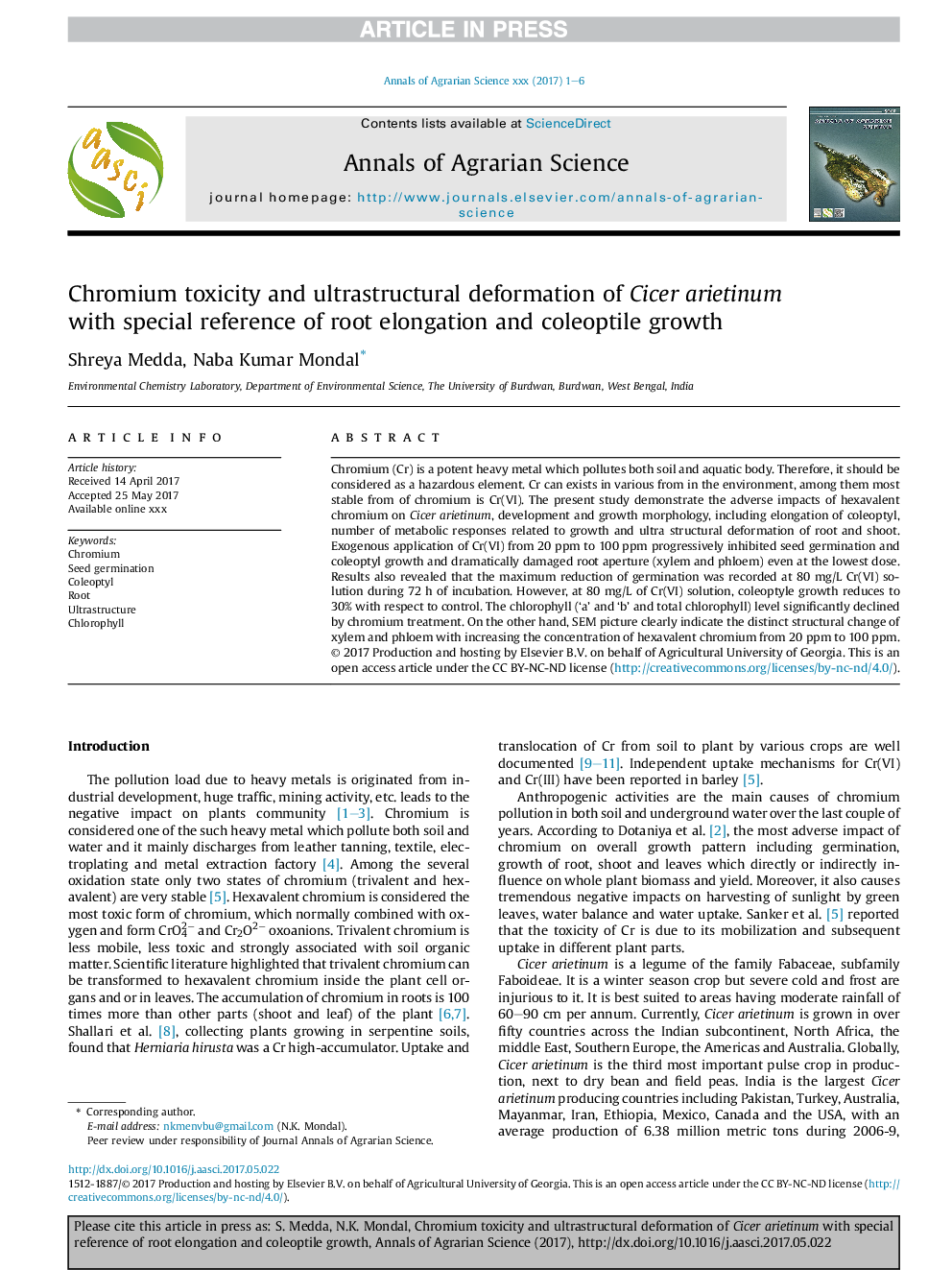| Article ID | Journal | Published Year | Pages | File Type |
|---|---|---|---|---|
| 7228635 | Annals of Agrarian Science | 2017 | 6 Pages |
Abstract
Chromium (Cr) is a potent heavy metal which pollutes both soil and aquatic body. Therefore, it should be considered as a hazardous element. Cr can exists in various from in the environment, among them most stable from of chromium is Cr(VI). The present study demonstrate the adverse impacts of hexavalent chromium on Cicer arietinum, development and growth morphology, including elongation of coleoptyl, number of metabolic responses related to growth and ultra structural deformation of root and shoot. Exogenous application of Cr(VI) from 20Â ppm to 100Â ppm progressively inhibited seed germination and coleoptyl growth and dramatically damaged root aperture (xylem and phloem) even at the lowest dose. Results also revealed that the maximum reduction of germination was recorded at 80Â mg/L Cr(VI) solution during 72Â h of incubation. However, at 80Â mg/L of Cr(VI) solution, coleoptyle growth reduces to 30% with respect to control. The chlorophyll ('a' and 'b' and total chlorophyll) level significantly declined by chromium treatment. On the other hand, SEM picture clearly indicate the distinct structural change of xylem and phloem with increasing the concentration of hexavalent chromium from 20Â ppm to 100Â ppm.
Related Topics
Physical Sciences and Engineering
Engineering
Biomedical Engineering
Authors
Shreya Medda, Naba Kumar Mondal,
